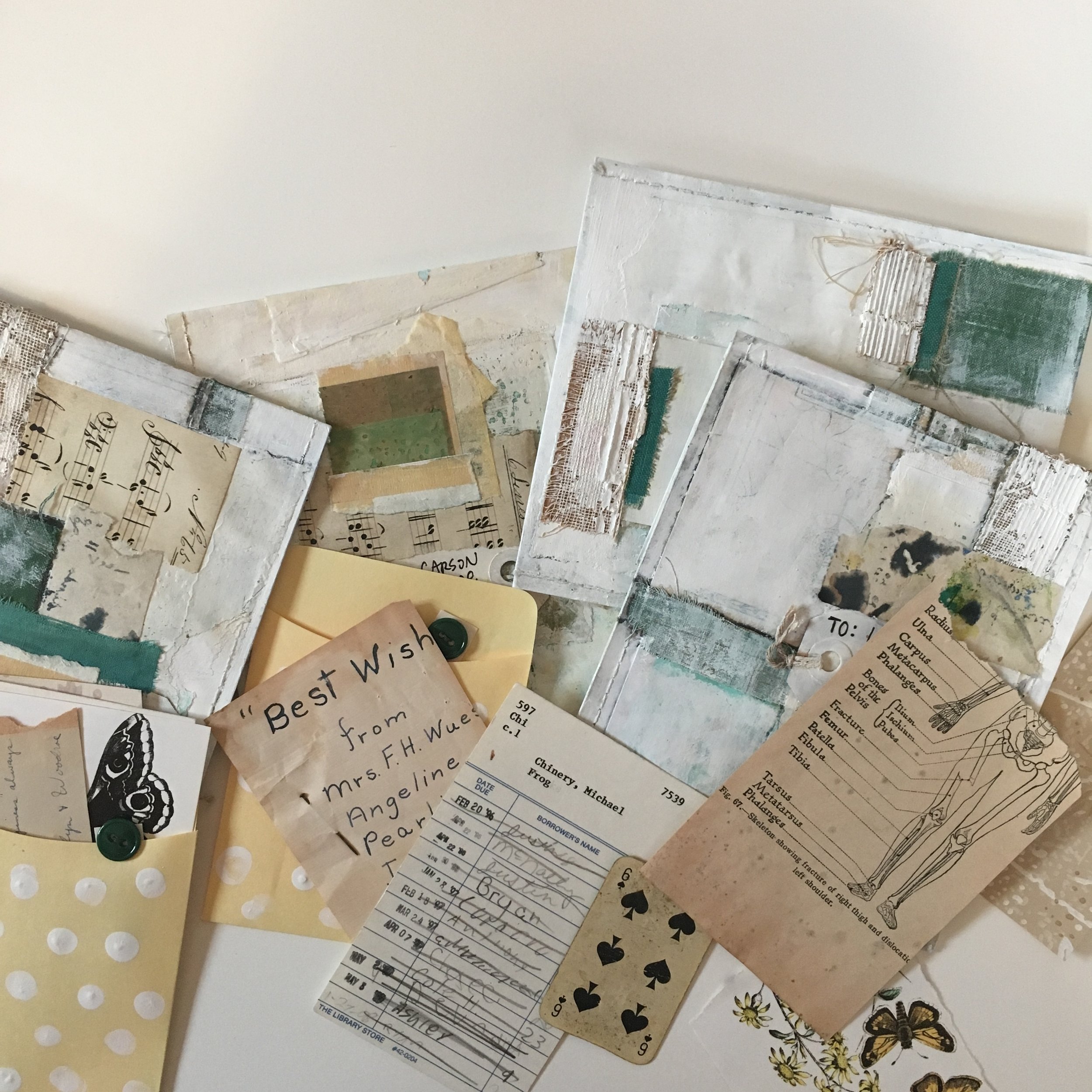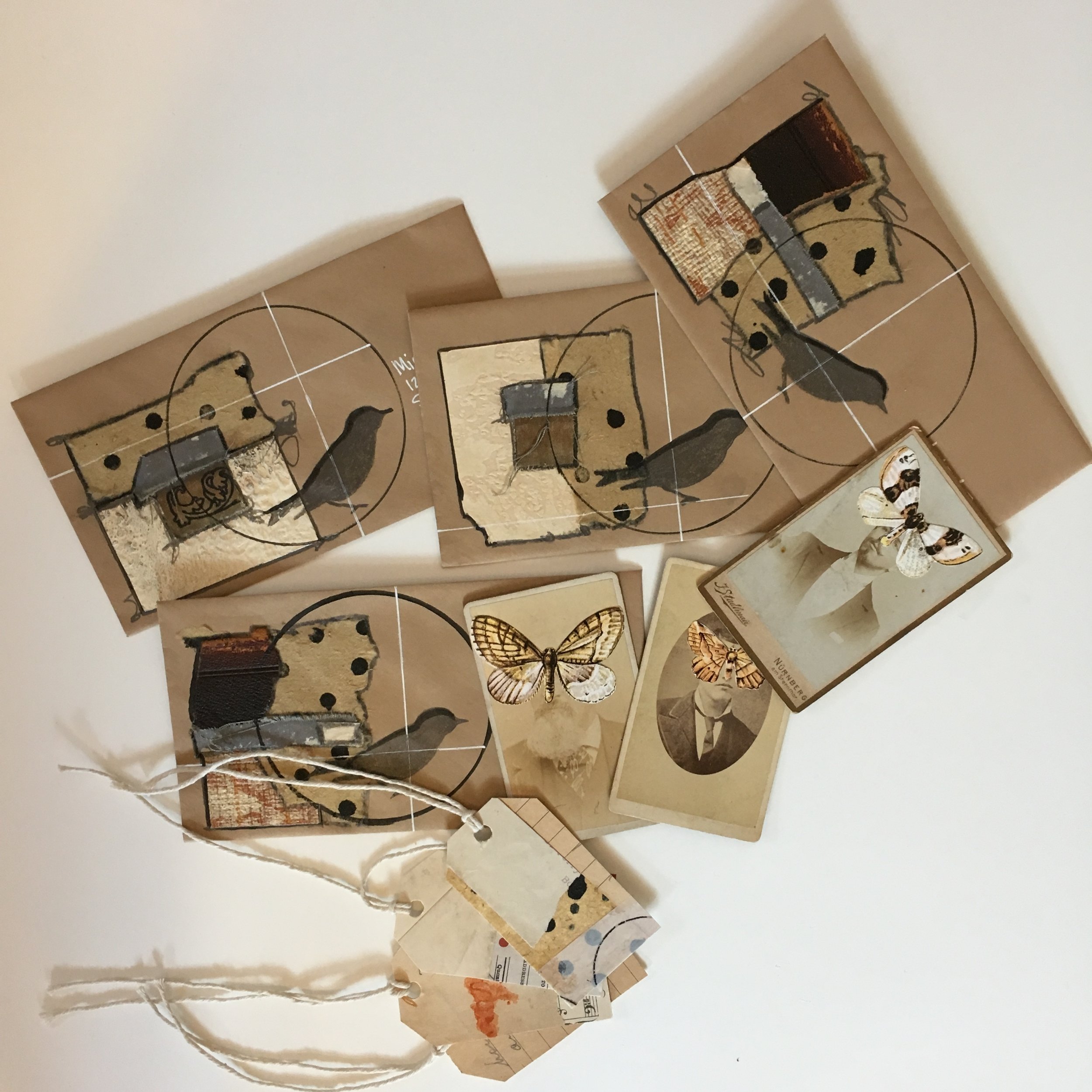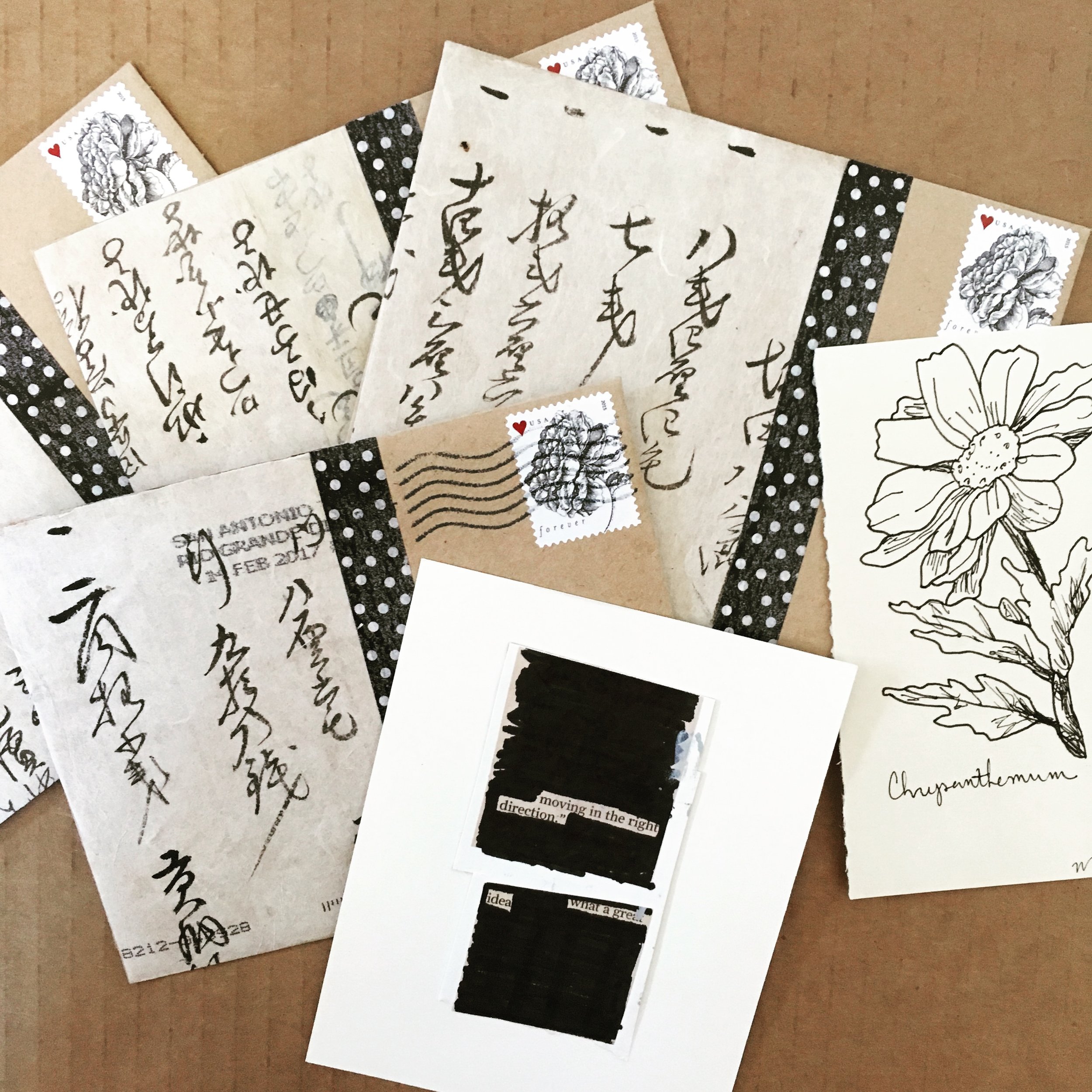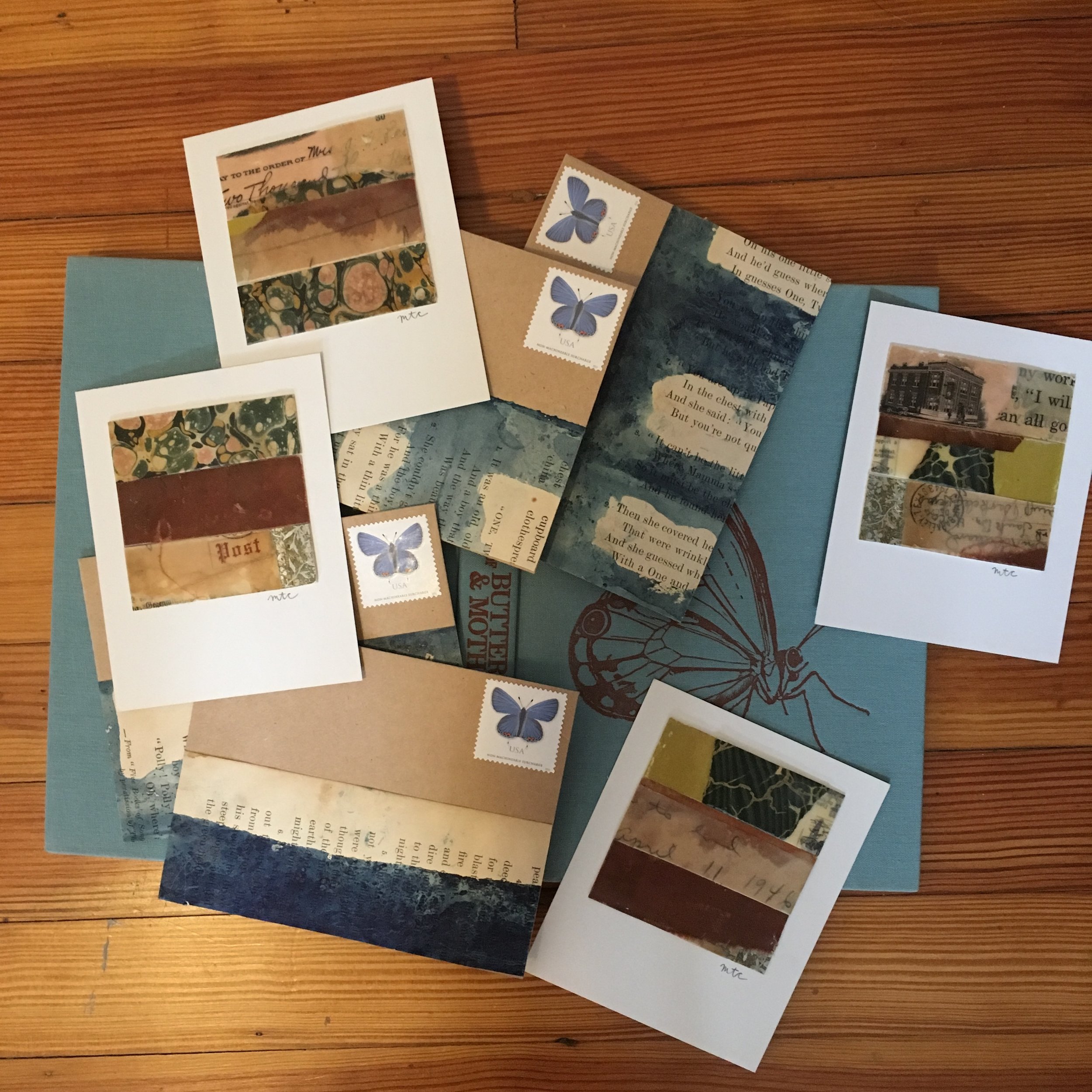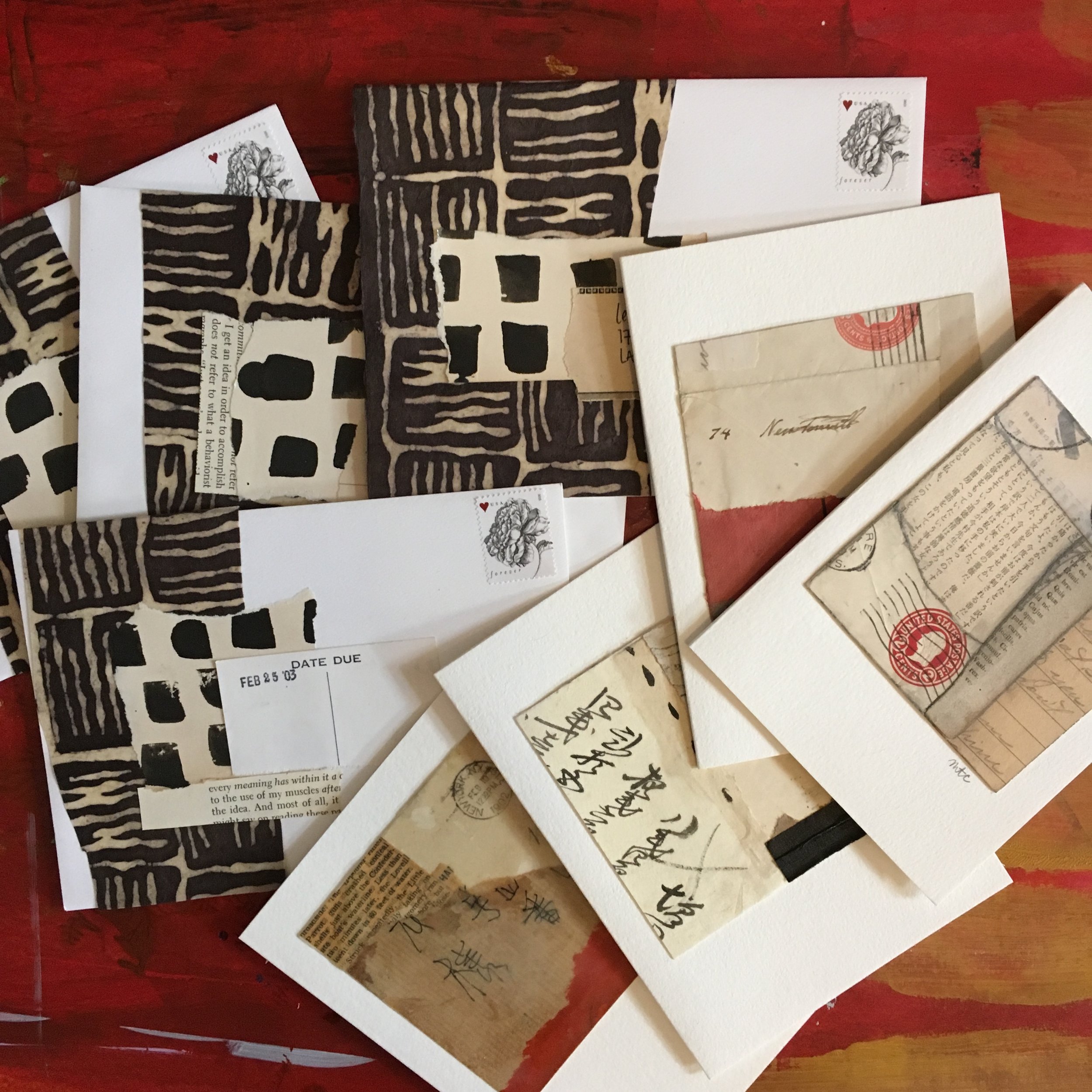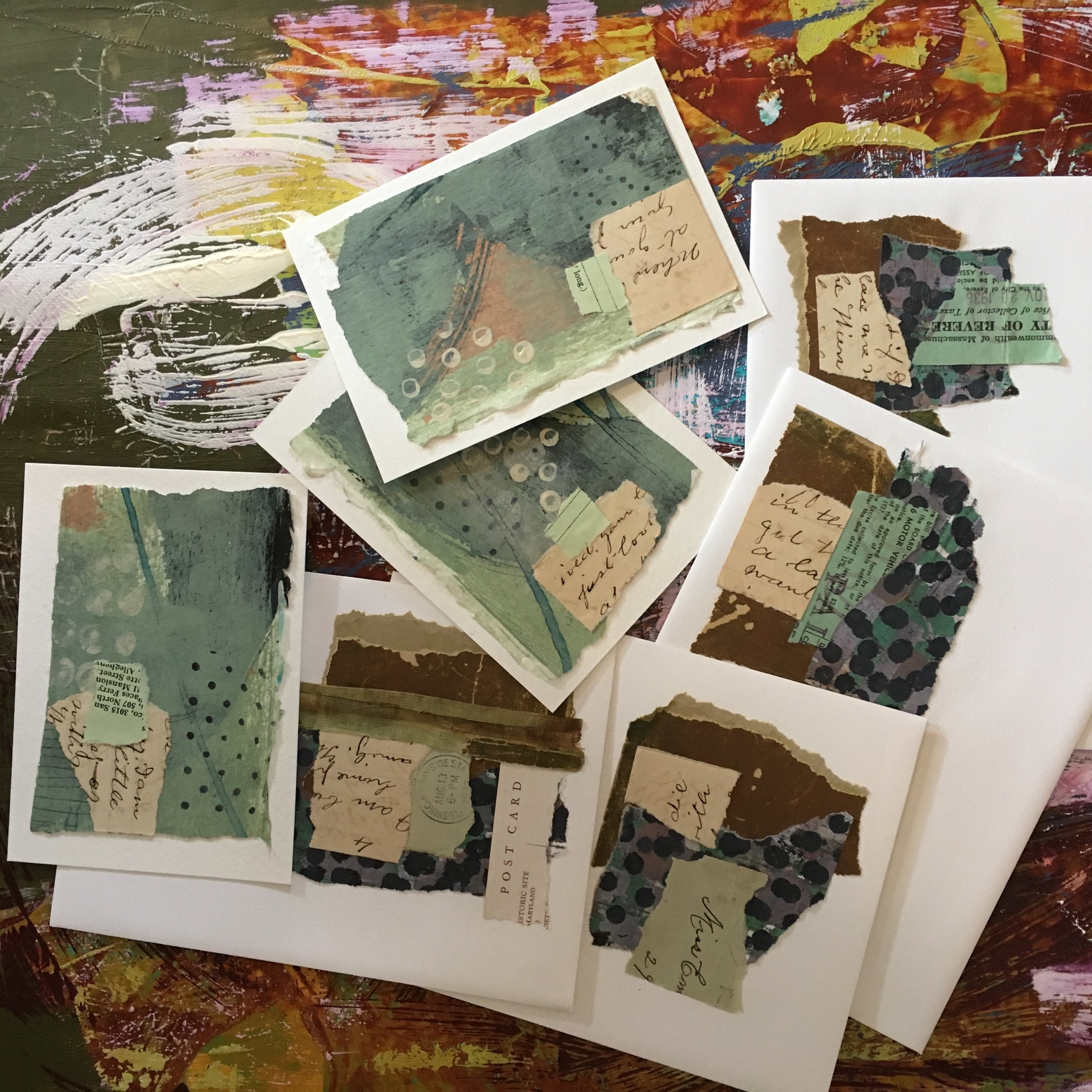2017 Mail Art Exhange
I've been quiet on the blog front lately (lady with a baby here), but I've been itching to write a post about my 2017 mail art exchange group, especially since we are half-way through it now. Late last year, I was contacted by two artists asking if I wanted to participate in their yearly mail-art exchange. Um, YES! There are four of us in the group, and every month we send each other a decorated envelope with some some of art inclusion via the U.S. Postal service. I get three original works of art in the mail every month, and I usually send one to myself so I can remember what I made.
I had never made mail-art before but I have long admired the art of Nick Bantock. I own his Griffin and Sabine book trilogy featuring his elaborate designs of faux postage stamps, handwritten documents, passports, postcards and other ephemera. Each story is told through a series of letters and postcards between the two main characters. I also love the book Lenore Tawney:Signs on the Wind; Postcard Collages. Tawney was a well known fiber artist but from the 1960s on, she also created whimsical postcard collages and sent them to friends and family members through the mail. I first saw this book, a compilation of her postcards, in a friend's art studio and knew I had to own it for myself. I have been a stamp collector since I was nine years old, when a stamp collector came to talk to my third grade class. I have also collected old letters and postcards for years but wasn't really using them much in my work.
This was pretty much the extent of my mail-art knowledge. So I did a little internet searching to learn more about it. Here's what Wikipedia has to say about it:
Mail art (also known as postal art and correspondence art) is a populist artistic movement centered on sending small scale works through the postal service. It initially developed out of the Fluxus movement in the 1950s and 60s, though it has since developed into a global movement that continues to the present.
Media commonly used in mail art include postcards, paper, a collage of found or recycled images and objects, rubber stamps, artist-created stamps, and paint, but can also include music, sound art, poetry, or anything that can be put in an envelope and sent via post. Mail art is considered art once it is dispatched.
Mail artists appreciate interconnection with other artists. The artform promotes an egalitarian way of creating that frequently circumvents official art distribution and approval systems such as the art market, museums, and galleries. Mail artists rely on their alternative "outsider" network as the primary way of sharing their work, rather than being dependent on the ability to locate and secure exhibition space. Mail art can be seen as anticipating the cyber communities founded on the Internet.
The most amazing part of the exchange is that I love the work of the other three artists. I have been following their work online for years, pinning them on my inspiration boards, and following them on instagram, but had no idea that they even knew I existed. The internet is an amazing place for artists ya'll. How great is it that we discovered each other on the internet but exchange art the old-fashioned way?! Also, mail-related ephemera has shown up more in my work lately. I've finally been using my postage stamp collection, using old post cards and letters as collage substrates, and it has greatly influenced my latest body of work entitled "Mail Landscapes," I'll talk more about these in a later post, but you can see some of this new work on my instagram @michelletcarson feed.
Here are some photos of mail I sent out so far this year, carefully arranged to conceal addresses. Of course my favorite part of any mail- art only appears after the post office gets hold of the envelopes, cancels the stamps, and send them through the system. Snail mail patina.

